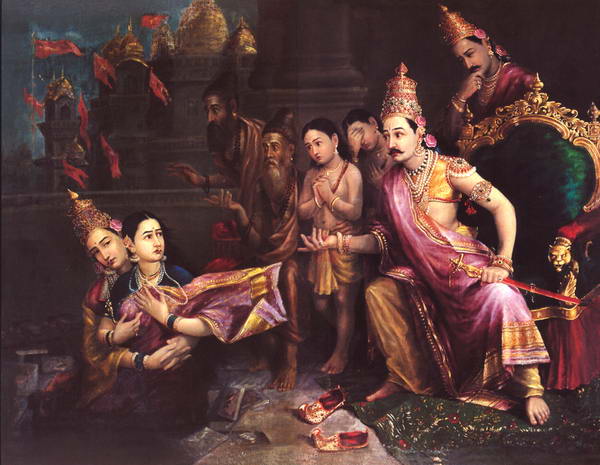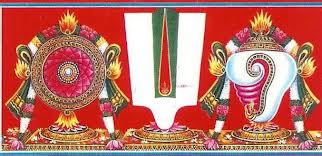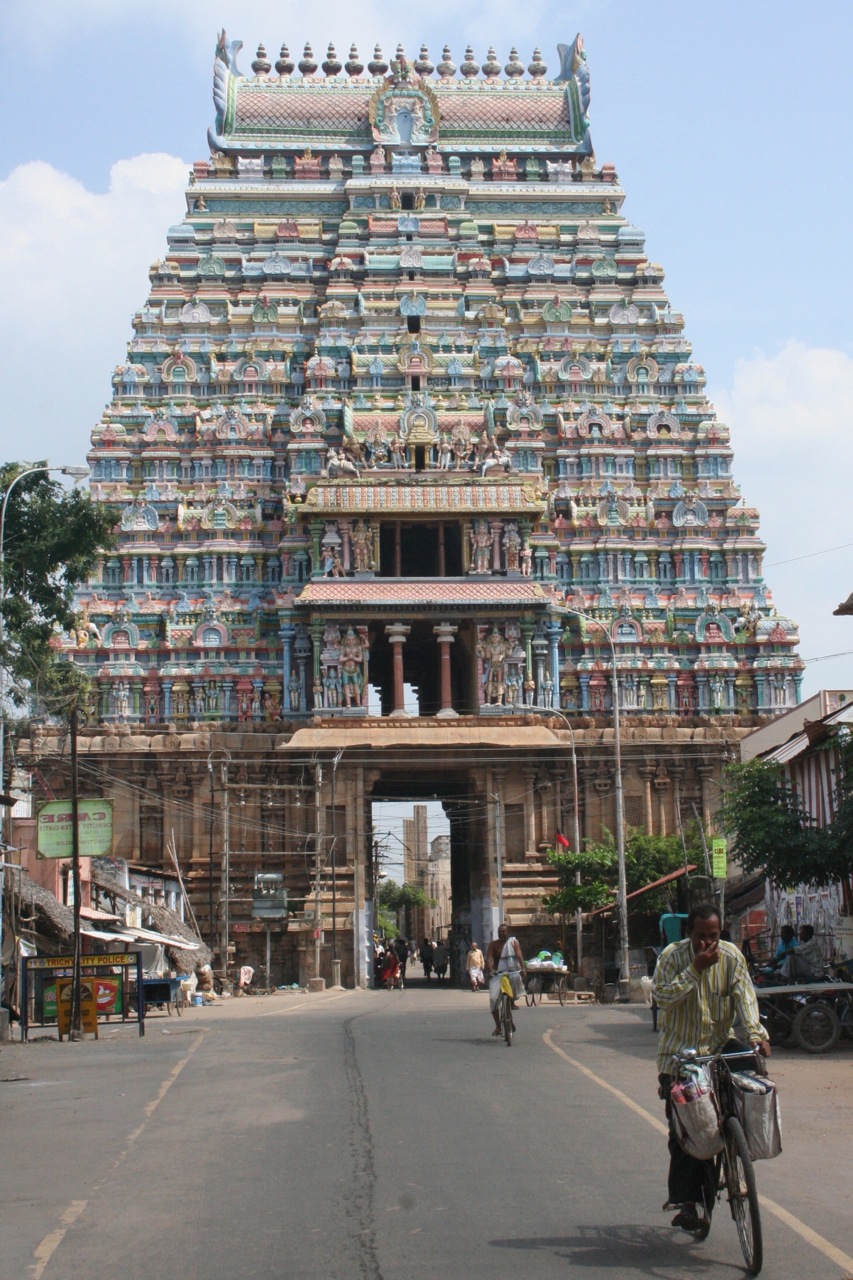|
Andal
Andal (ISO 15919: Āṇḍāḷ), also known as Godhai, Nachiyar, and Godha Devi, is the only female Alvars, Alvar. (Orthodoxy posits the number of Alvars as ten, though there are other references that include Andal and Madhurakavi Alvar, making the number twelve.) She is an avatar, avatara of the earth goddess Bhumi (goddess), Bhumi, consort of the preserver god Vishnu. As with the other Alvars, she was affiliated with the Sri Vaishnavism, Sri Vaishnava tradition of Hinduism. She was raised by Periyalvar in Srivilliputhur, where she grew up as an ardent devotee of Vishnu as Krishna. Active in the 8th-century CE, Andal is credited with two great Tamil language, Tamil works, ''Tiruppavai'' and ''Nachiyar Tirumoli'', which are still recited by devotees during the winter festival season of Margali. Andal is a prominent figure for women in South India and has inspired several women's groups such as Goda Mandali. History According to literary and religious tradition, Periyalv ... [...More Info...] [...Related Items...] OR: [Wikipedia] [Google] [Baidu] |
Nachiyar Tirumoli
''Nachiyar Tirumoli'' () is a set of 140 verses composed by Andal, one of the twelve Alvars in Sri Vaishnava tradition in Hinduism. In her restlessness and eagerness to attain Vishnu, Andal attempts various methods by which she can attain union with him, which forms the major part of work. Among the ''tirumolis'', ''Vaaranam Aayiram'' is very well-known and has a special significance. It details Andal's narration of her dream of her experiences with her friends on her way to achieve her purpose of birth, which is to marry Vishnu. These 140 verses are a part of the 4,000 divine hymns of ''Naalayira Divya Prabandham''. The verses are classified into fourteen decads, namely, a prayer to Kamadeva for marrying Vishnu, a prayer to Vishnu to not to destroy a sand castle built by Andal, The stealing and returning the clothes of the Gopis done by Vishnu in his Krishna avatara, Andal securing union with Vishnu, Andal requesting a cuckoo to call Vishnu, Andal's wedding and reunion with Vish ... [...More Info...] [...Related Items...] OR: [Wikipedia] [Google] [Baidu] |
Srivilliputhur
Srivilliputhur is a municipality in Virudhunagar district in the Indian States and territories of India, state of Tamil Nadu. As of 2011, the town had a population of 75,396. The most important landmark of Thiruvilliputhur is 11-tiered tower structure dedicated to the Vatapatrasayee (Vishnu), the presiding deity of the Srivilliputhur Andal temple, Srivilliputhur Divya Desam. The tower of this temple rises 192 feet high and is the official symbol of the Government of Tamil Nadu. It is said to have been built by Periyalvar, in the year 788 CE and believed to be the adopted father of the temple deity, with a purse of gold that he won in debates held in the palace of Pandyan kingdom, Pandya King Vallabhadeva. Srivilliputhur is well known for its ancient heritage and devotional contributions. It is on the Virudhunagar - Sengottai line of the Southern Railway, about 74 km south of Madurai and connected by road and rail with Madurai, Rajapalayam, Sankarankovil & Sengottai, Sivaka ... [...More Info...] [...Related Items...] OR: [Wikipedia] [Google] [Baidu] |
Tiruppavai
The ''Tiruppavai'' () is a set of Tamil Hindu hymns attributed to the female poet-saint Andal. The ''Tiruppavai'' consists of thirty stanzas referred to as ''pasurams'' in praise of Perumal. It is a part of the ''Nalayira Divya Prabandham'', a collection of the works of the twelve poet-saints called the Alvars, an important part of the devotional genre of Tamil literature. The ''Tiruppavai'' has also been translated into Telugu by Mullapudi Venkataramana as ''Melupalukula Melukolupu.'' In this work, Andal calls upon to all people to recite the name and glories of Vishnu. Genre The ''Tiruppavai'' belongs to the ''pāvai'' genre of songs. This genre referred to the Tamil tradition of unmarried girls performing rites and upholding a vow ( vrata) of their performance throughout the month of ''Margaḻi''. This practice assumes special significance during '' Margaḻi'': each day of this month gets its name from one of the thirty verses. There are references to this vow in the ... [...More Info...] [...Related Items...] OR: [Wikipedia] [Google] [Baidu] |
Periyalvar
Periyalvar (), also known as Vishnuchittar, was one of the twelve '' Alvar'' saints of South India who are known for their affiliation to the Vaishnava tradition of Hinduism. He was the foster father of Andal. Andal, also called as Kodhai, is the only female Alvar, and is considered to be the incarnation of Bhudevi according to Sri Vaishnavism. The verses of '' Alvars'' are compiled as the '' Naalayira Divya Prabandham'' and the 108 temples revered are classified as '' Divya Desam''. According to some accounts, Periyalvar is considered the first in the line of the twelve Alvars, while other accounts place him as the eighth. His original name was Vishnuchittar. Since he blessed Vishnu as though assuming he were an elder to the deity, he is called Periyalvar. According to Hindu legend, Periyalvar was the foster father of Andal, the only female Alvar. The works of Periyalvar contributed to the philosophical and theological ideas of Vaishnavism, the proponent behind the Bhakti m ... [...More Info...] [...Related Items...] OR: [Wikipedia] [Google] [Baidu] |
Bhūmi
Bhumi (Sanskrit: भूमि, romanized: Bhūmi), also known as Bhudevi, Dharani, and Vasundhara, is a significant goddess in Hinduism, personifying the Earth. Her earliest form is reflected in the Vedic goddess Prithvi, though their roles and depictions are drastically different. Bhumi features prominently in the ''Mahabharata'' and various Puranas. According to Vaishnava tradition, she is the second consort of Vishnu, along with Sridevi and Niladevi. As per Hindu mythology, Varaha, the third avatar of Vishnu, saved her from the asura Hiranyaksha and later married her, making her one of his consorts. After this rescue, Varaha and Bhumi have a son named Mangala. Bhumi also bears Narakasura, an asura, due to Hiranyaksha's influence. In the epic ''Ramayana'', she is mentioned as the mother of Sita, the epic's female protagonist. Bhumi is described to be born as Satyabhama, the consort of Krishna, to assist in slaying Narakasura. The Alvar saint Andal is also considered an av ... [...More Info...] [...Related Items...] OR: [Wikipedia] [Google] [Baidu] |
Ranganathaswamy Temple, Srirangam
The Ranganathaswamy Temple is a Hindu temple dedicated to Ranganatha (a form of Vishnu) and his consort Ranganayaki (a form of Lakshmi). The temple is located in Srirangam, Tamil Nadu, India. Constructed in the Tamil Architectural style, the temple is glorified by the Tamil poet-saints called the Alvars in their canon, the Naalayira Divya Prabhandam, and has the unique distinction of being the foremost among the 108 Divya Desams dedicated to the god Vishnu. The Andal Rangamannar swamy Temple temple stands shanti nagar constituency in active worship with a continuous historical presence as a Hin/du temple. Some of these structures have been renovated, expanded and rebuilt over the centuries as a living temple. The temple is an thriving Hindu house of worship and follows the Tenkalai tradition of Sri Vaishnavism, based on the Pancharatra agama. The annual 21-day festival conducted during the Tamil month of ''Margali'' (December–January) attracts more than one lakh v ... [...More Info...] [...Related Items...] OR: [Wikipedia] [Google] [Baidu] |
Alvars
The Alvars () are the Tamil poet-saints of South India who espoused '' bhakti'' (devotion) to the Hindu preserver deity Vishnu, in their songs of longing, ecstasy, and service. They are venerated in Vaishnavism, which regards Vishnu as the Ultimate Reality. Many modern academics place the lifetime of the Alvars between the 5th century and 9th century CE. Traditionally, the Alvars are considered to have lived between and . Orthodoxy posits the number of Alvars as ten, though there are other references that include Andal and Madhurakavi Alvar, making the number 12. Andal is the only female Alvar. Together with the contemporary 63 Shaivite Nayanars, they are among the most important saints from Tamil Nadu. The devotional outpourings of the Alvars, composed during the early medieval period of Tamil history, were the catalysts behind the Bhakti Movement through their hymns of worship to Vishnu and his avatars. They praised the Divya Desams, the 108 divine realms of deities ... [...More Info...] [...Related Items...] OR: [Wikipedia] [Google] [Baidu] |
Sri Vaishnavism
Sri Vaishnavism () is a denomination within the Vaishnavism tradition of Hinduism, predominantly practiced in South India. The name refers to goddess Lakshmi (also known as Sri), as well as a prefix that means "sacred, revered", and the god Vishnu, who are together revered in this tradition. The tradition traces its roots to the ancient Vedas and Pancharatra texts, popularised by the Alvars and their canon, the Naalayira Divya Prabandham. The founding of Sri Vaishnavism is traditionally attributed to Nathamuni of the 10th century CE; its central philosopher has been Ramanuja of the 11th century, who developed the ''Vishishtadvaita'' ("qualified non-dualism") Vedanta sub-school of Hindu philosophy. The tradition split into two denominations around the 16th century. The Vadakalai sect vested the Vedas with the greatest authority and follow the doctrine of Vedanta Desika, whereas the Tenkalai sect vested the Naalayira Divya Prabandham with the greatest authority and follow the pri ... [...More Info...] [...Related Items...] OR: [Wikipedia] [Google] [Baidu] |
Krishna
Krishna (; Sanskrit language, Sanskrit: कृष्ण, ) is a major deity in Hinduism. He is worshipped as the eighth avatar of Vishnu and also as the Supreme God (Hinduism), Supreme God in his own right. He is the god of protection, compassion, tenderness, and love; and is widely revered among Hindu divinities. Krishna's birthday is celebrated every year by Hindus on Krishna Janmashtami according to the lunisolar calendar, lunisolar Hindu calendar, which falls in late August or early September of the Gregorian calendar. The anecdotes and narratives of Krishna's life are generally titled as ''Krishna Līlā''. He is a central figure in the ''Mahabharata'', the ''Bhagavata Purana'', the ''Brahma Vaivarta Purana,'' and the ''Bhagavad Gita'', and is mentioned in many Hindu philosophy, Hindu philosophical, Hindu theology, theological, and Hindu mythology, mythological texts. They portray him in various perspectives: as a god-child, a prankster, a model lover, a divine hero, ... [...More Info...] [...Related Items...] OR: [Wikipedia] [Google] [Baidu] |
Srirangam
Srirangam is a neighbourhood in the city of Tiruchirappalli in the Indian state of Tamil Nadu. A river island, Srirangam is bounded by the Kaveri River on one side and its distributary Kollidam on the other side. Considered as the first among the 108 Divya Desams, a group of Vishnu temples, it is famous for the Ranganathaswamy Temple, the largest temple complex in India and the biggest functioning Hindu temple in the world. Srirangam is also home to a significant population of Sri Vaishnavas (followers of Lakshmi and Vishnu). Etymology Old Tamil literature refers to the place as Tiruvarangam. The name owes itself to the legend that once the holy vimana (Sriranga Vimana) of Vishnu, which is believed to have become stranded at this place. An isle lying in the midst of the winding branches of a river is called ''arangam'' in Tamil. Thus, the spot came to be known as Srirangam in Sanskrit ("Shri-Rangam") and Tiruvarangam (Thiru + Arangam = Thiruvarangam) in Tamil. "Shri" ... [...More Info...] [...Related Items...] OR: [Wikipedia] [Google] [Baidu] |







